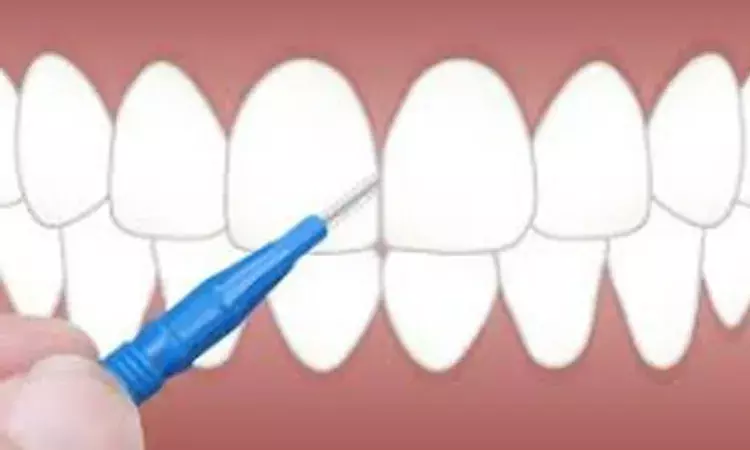- Home
- Medical news & Guidelines
- Anesthesiology
- Cardiology and CTVS
- Critical Care
- Dentistry
- Dermatology
- Diabetes and Endocrinology
- ENT
- Gastroenterology
- Medicine
- Nephrology
- Neurology
- Obstretics-Gynaecology
- Oncology
- Ophthalmology
- Orthopaedics
- Pediatrics-Neonatology
- Psychiatry
- Pulmonology
- Radiology
- Surgery
- Urology
- Laboratory Medicine
- Diet
- Nursing
- Paramedical
- Physiotherapy
- Health news
- Fact Check
- Bone Health Fact Check
- Brain Health Fact Check
- Cancer Related Fact Check
- Child Care Fact Check
- Dental and oral health fact check
- Diabetes and metabolic health fact check
- Diet and Nutrition Fact Check
- Eye and ENT Care Fact Check
- Fitness fact check
- Gut health fact check
- Heart health fact check
- Kidney health fact check
- Medical education fact check
- Men's health fact check
- Respiratory fact check
- Skin and hair care fact check
- Vaccine and Immunization fact check
- Women's health fact check
- AYUSH
- State News
- Andaman and Nicobar Islands
- Andhra Pradesh
- Arunachal Pradesh
- Assam
- Bihar
- Chandigarh
- Chattisgarh
- Dadra and Nagar Haveli
- Daman and Diu
- Delhi
- Goa
- Gujarat
- Haryana
- Himachal Pradesh
- Jammu & Kashmir
- Jharkhand
- Karnataka
- Kerala
- Ladakh
- Lakshadweep
- Madhya Pradesh
- Maharashtra
- Manipur
- Meghalaya
- Mizoram
- Nagaland
- Odisha
- Puducherry
- Punjab
- Rajasthan
- Sikkim
- Tamil Nadu
- Telangana
- Tripura
- Uttar Pradesh
- Uttrakhand
- West Bengal
- Medical Education
- Industry
PRF membrane as good as SCTG technique for treating papillary recession defects: Study

Investigators have shown that although the SCTG technique provided a better result in terms of interdental papilla fill, PRF avoids the second donor site, thus decreasing the patient's morbidity, hence both the techniques are effective in the treatment of papillary recession defects, according to recent research published in the Journal of the Indian Society of Periodontology.
Platelet‑rich fibrin (PRF) has emerged as one of the promising regenerative materials in the field of periodontics. It is a second‑generation platelet concentrate having various beneficial properties such as easier preparation, cost-effectiveness, and good patient acceptability. It is enriched with various growth factors, platelets, and cytokines that promote wound healing.
While the use of SCTG for papilla reconstruction depends on the dual blood supply, thus improving the survival of the graft and enhancing the predictability of the surgical technique. However, acquirement of connective tissue graft is technique sensitive, time-consuming and it involves the second surgical site.
Therefore, Preeti Sharma and colleagues from the Department of Periodontology and Implantology, I.T.S‑CDSR, Ghaziabad, Uttar Pradesh, India conducted the present study to evaluate the efficacy of subepithelial connective tissue graft (SCTG) and PRF in surgical reconstruction of interdental papillae using Han and Takei technique.
The authors investigated a total of 20 sites with Class I and Class II interdental papilla defects. These sites were assigned into two groups: Group 1 – Han and Takie technique + SCTG; Group 2: Han and Takie technique + PRF. Parameters such as papillary height (PH), distance from the contact point to the tip of papillae (CPTP), papilla presence index (PPI), pocket probing depth (PPD), relative clinical attachment level (RCAL), plaque index (PI), gingival index (GI), and distance from contact point to an alveolar crest (CP‑BC) was measured at baseline and after 3 months.
The authors observed the following results-
- The mean PI, GI, PPD, RCAL, PPI, and CPTP distance decreased significantly, whereas the mean PH increased significantly in Group 1 as well as in Group 2.
- After 3 months, mean reduction in CPTP distance and mean gain in PH were statistically significant in Group 1 as compared to Group 2.
- However, there was no significant difference in mean CPBC distance between baseline and 3 months in Group 1 as well as in Group 2.
Hence, the researchers concluded that "both Han and Takie technique with SCTG and Han and Takie technique with PRF was effective in the surgical reconstruction of interdental papillary recession defects. Although the SCTG technique provided a better result in terms of interdental papilla fill, PRF avoids the second donor site, thus decreasing the patient's morbidity. Therefore, PRF could be considered an alternative to the "gold standard" SCTG. The effect needs to be further investigated using long-term clinical and histological studies."
For further reference, log in to:
Sharma P, Vaish S, Sharma N, Sekhar V, Achom M, Khan F. Comparative evaluation of efficacy of subepithelial connective tissue graft versus platelet‑rich fibrin membrane in surgical reconstruction of interdental papillae using Han and Takie technique: A randomized controlled clinical trial. J Indian Soc Periodontol 2020;24:547-53.
Dr. Nandita Mohan is a practicing pediatric dentist with more than 5 years of clinical work experience. Along with this, she is equally interested in keeping herself up to date about the latest developments in the field of medicine and dentistry which is the driving force for her to be in association with Medical Dialogues. She also has her name attached with many publications; both national and international. She has pursued her BDS from Rajiv Gandhi University of Health Sciences, Bangalore and later went to enter her dream specialty (MDS) in the Department of Pedodontics and Preventive Dentistry from Pt. B.D. Sharma University of Health Sciences. Through all the years of experience, her core interest in learning something new has never stopped. She can be contacted at editorial@medicaldialogues.in. Contact no. 011-43720751
Dr Kamal Kant Kohli-MBBS, DTCD- a chest specialist with more than 30 years of practice and a flair for writing clinical articles, Dr Kamal Kant Kohli joined Medical Dialogues as a Chief Editor of Medical News. Besides writing articles, as an editor, he proofreads and verifies all the medical content published on Medical Dialogues including those coming from journals, studies,medical conferences,guidelines etc. Email: drkohli@medicaldialogues.in. Contact no. 011-43720751


